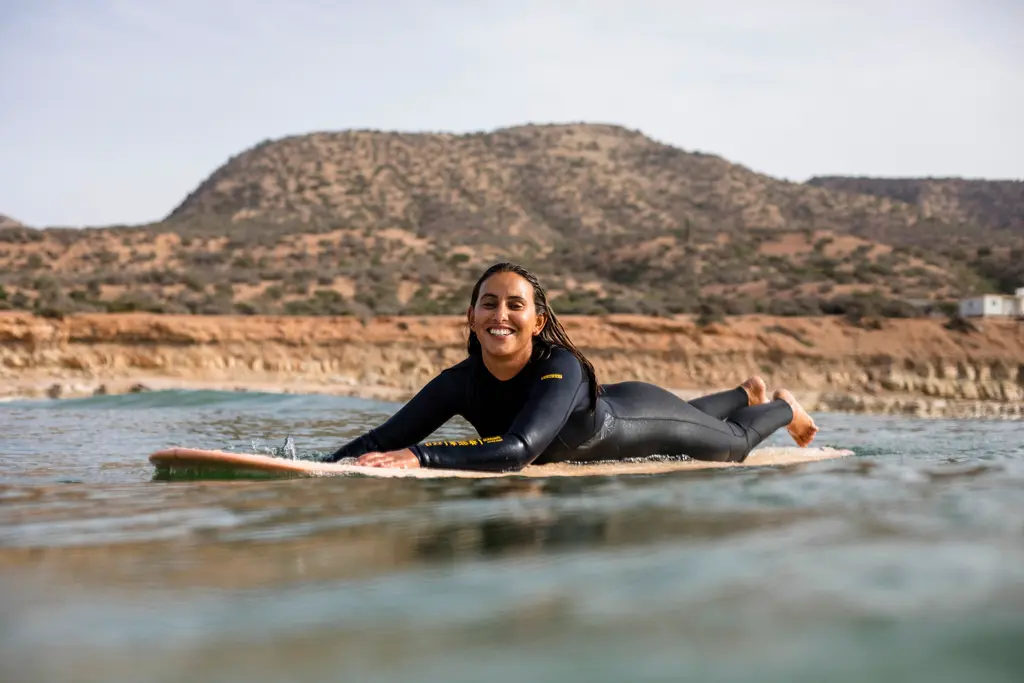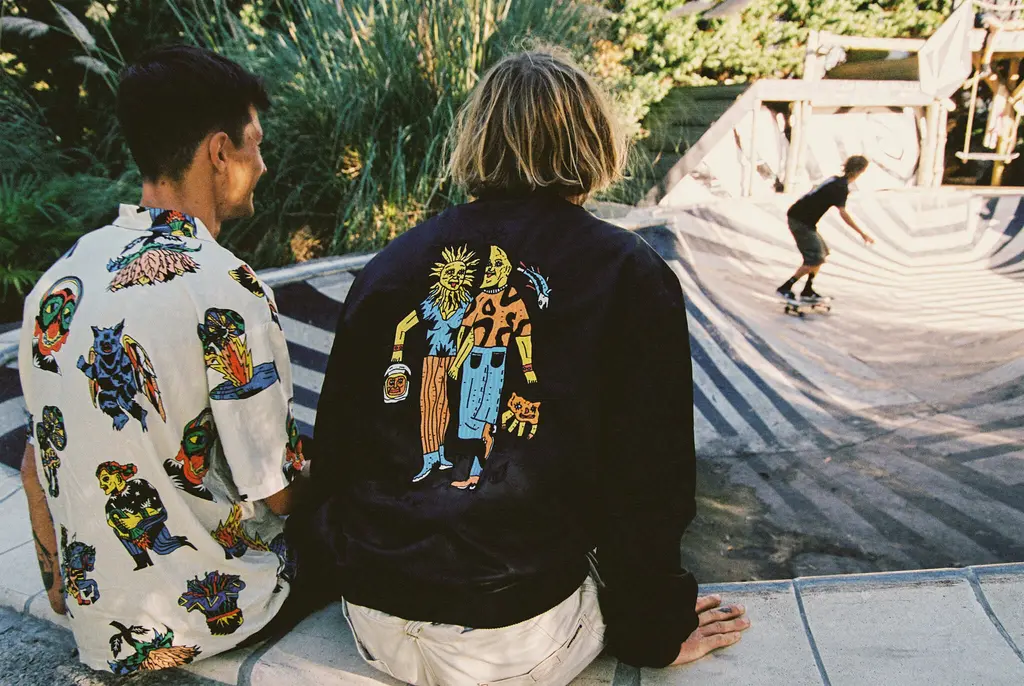Women are pioneering surfing in Iran and smashing outdated stereotypes
- Text by Alex Taylor

There aren’t too many people who think about cultivating a surf scene in Iran. A country known more for its oil is rarely spoken about as having a massive sporting culture but Iran is obsessed with football, basketball and skiing. And now surfing can be added to the list. But, surprisingly for a country that has a reputation for repressing women, it’s women who are pioneering the sport in Iran and massively changing perceptions.
It is this progressive attitude that Marion Poizeau has captured in her documentary Into The Sea. Following Easkey Britton, the Irish surfer and artist, Poizeau demonstrates how passionate the people of Iran are for surfing and the unity it can bring. Along with Mona Seraji, an Iranian snowboarder and Shalha Yasini, an Iranian diver, Britton and Poizeau explore the cultural fascination with the growing sport and women’s empowering role within it.
We caught up with Marion to find out more.
This isn’t the first film that you have shot in the Middle East. What is it about the region that interests you so much?
I have a real interest for this region. It comes from the fascination I have for Persia and all the legends I have read – One Thousand and One Nights and the poetry of Hafez and Rumi. Aladdin was my favourite cartoon when I was a kid. We don’t really know this place anymore, only by the media, so it’s become as scary as it is fascinating.
How far do you think attitude’s to women in sport will change in Iran?
Women are already practicing a lot of sport in Iran. I don’t know how far they will go but they are already participating in international competitions. They are doing it with determination whatever the constraints they have. They are strong women.
What was the most rewarding part of shooting your documentary?
The most rewarding part of the shooting was being able to work with amazing Iranian technicians and filmmakers. Filming such a story in Iran was not so easy but I had support from the embassy and the local leaders of the region. I realise that sharing this story with art can create a sense a solidarity and a lot of people helped me to make it happen.
How did it feel to establish surfing in a new country?
It feels great to imagine that we are spraying the beauty across culture and, once again, we proved the amazing potential of sport and surfing in breaking down barriers. Being a pioneer of this story gave me the energy to do more and try to expand It.
I found the geography and landscapes shown in the film to be particularly striking. What is it like to see those places in person?
The landscape is stunning and I never get bored of the beauty of nature. It sometimes creates a mystical atmosphere that reminds me what I had in mind when I was reading Sherazade’s stories.
Will you be revisiting Iran in the future to see how its surf scene has grown?
I am often going back to Iran because I have a lot of friends there and this place is full of creative inspiration. Last time I went was in December for the International Documentary Festival in Tehran where Into The Sea was screened. This was an unexpectedly big reward to watch my film on the big screen in Iran. I was nervous but I had a great feedback from Iranians.
How did you first come to link up with Easkey, Mona and Shalha?
I first linked up with Easkey Britton during our trip in 2010. A mutual friend knew that there were potential waves in the south-east of Iran and he organised the trip but he missed the flight! We met in Tehran with Easkey determined to still going surfing. I made a short film of our first trip that generated some interest from Iranians that motivated us to go back.
When we decided to go back in 2013, I wanted to create a group with women that would encourage more to join us. I found Mona and Shalha on Facebook, both were already very involved in sport disciplines. Mona in Snowboard and Shalha in swimming and diving. They both accepted the adventure with a lot of enthusiasm. I have been lucky to work with these three amazing women.
Were there any of your own prejudices or ideas that were dispelled during the filming of Into The Sea?
Yes, a lot of them. All we know about Iran is what we can watch or read from occidental databases. So we can’t really be objective and we had a lot in mind before leaving. Working with an Iranian crew helped me to be more objective in regards to many things; womens’ situations, the hijab etc. I think it’s important to share our cultural diversity to have a better understanding.
Enjoyed this article? Like Huck on Facebook or follow us on Twitter.
You might like

In The Road to Patagonia, Matty Hannon holds “a mirror to the human condition”
From tip to tip — More than a surf and travel documentary, the Australian filmmaker meditates on capitalism’s pitfalls and the importance of existing within nature while embarking on a marathon journey from Alaska to Tierra del Fuego.
Written by: Sam Haddad

Maryam El Gardoum is breaking new shores for Morocco’s indigenous surfers
The Amazigh Atlantic — Through her groundbreaking career and popular surf school, the five-time Moroccan champion is helping women find their places in the waves.
Written by: Sam Haddad

Volcom teams up with Bob Mollema for the latest in its Featured Artist Series
True to This — The boardsports lifestyle brand will host an art show in Biarritz to celebrate the Dutch illustrators’ second capsule collection.
Written by: Huck

A new documentary spotlights Ecuador’s women surfers fighting climate change
Ceibo — Co-directed by Maddie Meddings and Lucy Small, the film focuses on the work and story of Pacha Light, a wave rider who lived off-grid before reconnecting with her country’s activist heritage.
Written by: Hannah Bentley

The rebellious roots of Cornwall’s surfing scene
100 years of waveriding — Despite past attempts to ban the sport from beaches, surfers have remained as integral, conservationist presences in England’s southwestern tip. A new exhibition in Falmouth traces its long history in the area.
Written by: Ella Glossop

In Queens, local surfers are moulding a neighbourhood in their own renegade images
Rockaway breaks — On a little-known stretch of beach in eastern New York City, an ecosystem of wave catchers, and the local bars and restaurants that fuel them, is seeing a boom. Paolo Bicchieri meets the residents and business owners behind the growing swell.
Written by: Paolo Bicchieri

